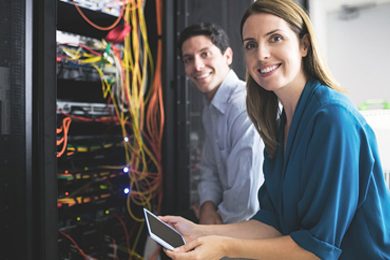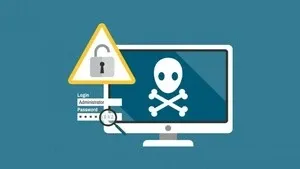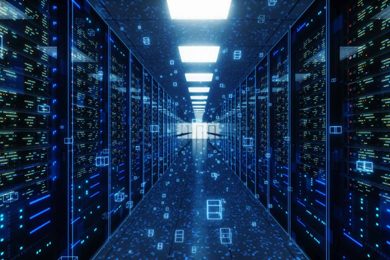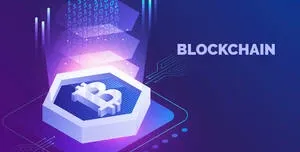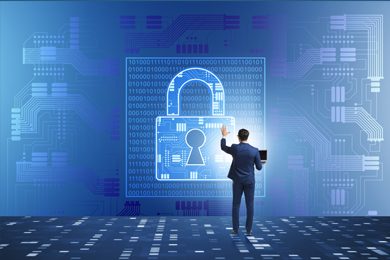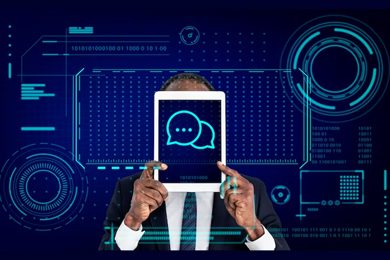This plan includes
- Limited free courses access
- Play & Pause Course Videos
- Video Recorded Lectures
- Learn on Mobile/PC/Tablet
- Quizzes and Real Projects
- Lifetime Course Certificate
- Email & Chat Support
What you'll learn?
- Once you complete the course, you will have the knowledge and confidence to pass the exams AND the skills to be a great network tech. This course is ideal as both a study tool and an on-the-job reference.
- Your new skills and the CompTIA Network+ Certification will help you land a network tech job or if you are already a network tech, get that raise or advancement you are seeking.
Course Overview
CompTIA Network+ Certification; N10-007. The Total Course from Mike Meyers and Total Seminars.
This course is over 24 hours in length and covers everything you need to know to pass your CompTIA Network+ Certification (N10-007) Exam. The first goal of the course is to make you a good Network Tech and, in the process, make sure you are ready to pass the CompTIA exam. WHAT OUR STUDENTS ARE SAYING:I used these courses to pass the A+, Security+, and Network+ in a span of 2.5 months. I had no IT experience 4 months ago. Now I am a network engineer at a managed service provider with a great salary and solid upward mobility." - Ryan D.
The course covers all the exam topics including:
Network architectures
Cabling and topology
Ethernet basics
Network Installation
TCP/IP applications and network protocols
Routing
Network naming
Advanced networking devices
IPv6
Remote connectivity
Wireless networking
Virtualization and cloud computing
Network operations
Managing risk
This is a Total Network+ Course and covers everything a good tech needs to know and prepares you to pass the CompTIA Network+ Certification exam.
Pre-requisites
- Basic familiarity with networks.
- There are no specific prerequisites as the course covers all the topics in detail. However, it’s a good idea to have an understanding of CompTIA A+ Certification topics or to be A+ Certified. You can learn more about A+ Certification topics from our Mike Meyers – Total Seminars CompTIA A+ Certification course on Udemy.
Target Audience
- This course is intended for anyone that is preparing for a network technician position or looking to improve their skills and become CompTIA Network+ Certified. However, it goes beyond that and will give you the skills you need to be a better network tech on the job.
- This is a complete and comprehensive CompTIA Network+ Certification (N10-007) course. It is designed to prepare the student to be able to take and pass the certification exam needed to become CompTIA Network+ Certified.
Curriculum 193 Lectures 22:59:47
Section 1 : Network Models
- Lecture 2 :
- OSI vs. TCP/IP Model
- Lecture 3 :
- Walking Through OSI and TCP/IP
- Lecture 4 :
- Meet the Frame
- Lecture 5 :
- The MAC Address
- Lecture 6 :
- Broadcast vs. Unicast
- Lecture 7 :
- Introduction to IP Addressing
- Lecture 8 :
- Packets and Ports
- Lecture 9 :
- Introduction to Net+
- Lecture 10 :
- Network Models
Section 2 : Cabling and Topology
- Lecture 1 :
- Network Topologies
- Lecture 2 :
- Coaxial Cabling
- Lecture 3 :
- Twisted Pair Cabling
- Lecture 4 :
- Cat Ratings
- Lecture 5 :
- Fiber Optic Cabling
- Lecture 6 :
- Fire Ratings
- Lecture 7 :
- Legacy Network Connections
- Lecture 8 :
- Cabling and Topology
Section 3 : Ethernet Basics
- Lecture 1 :
- What is Ethernet?
- Lecture 2 :
- Early Ethernet
- Lecture 3 :
- The Daddy of Ethernet, 10BaseT
- Lecture 4 :
- Terminating Twisted Pair
- Lecture 5 :
- Hubs vs. Switches
- Lecture 6 :
- Ethernet Frames
- Lecture 7 :
- Ethernet Basics
Section 4 : Modern Ethernet
- Lecture 1 :
- 100BaseT
- Lecture 2 :
- Connecting Switches
- Lecture 3 :
- Gigabit Ethernet and 10-Gigabit Ethernet
- Lecture 4 :
- Transceivers
- Lecture 5 :
- Connecting Ethernet Scenarios
- Lecture 6 :
- Modern Ethernet
Section 5 : Installing a Physical Network
- Lecture 1 :
- Introduction to Structured Cabling
- Lecture 2 :
- Terminating Structured Cabling
- Lecture 3 :
- Equipment Room
- Lecture 4 :
- Alternative Distribution Panels
- Lecture 5 :
- Testing Cable
- Lecture 6 :
- Troubleshooting Structured Cabling, Part 1
- Lecture 7 :
- Troubleshooting Structured Cabling, Part 2
- Lecture 8 :
- Using a Toner and Probe
- Lecture 9 :
- Wired Connection Scenarios
- Lecture 10 :
- Installing a Physical Network
Section 6 : TCP/IP Basics
- Lecture 1 :
- Introduction to IP Addressing and Binary
- Lecture 2 :
- Introduction to ARP
- Lecture 3 :
- Classful Addressing
- Lecture 4 :
- Subnet Masks
- Lecture 5 :
- Subnetting with CIDR
- Lecture 6 :
- More CIDR Subnetting Practice
- Lecture 7 :
- Dynamic and Static IP Addressing
- Lecture 8 :
- Rogue DHCP Servers
- Lecture 9 :
- Special IP Addresses
- Lecture 10 :
- IP Addressing Scenarios
- Lecture 11 :
- TCP/IP Basics
Section 7 : Routing
- Lecture 1 :
- Introducing Routers
- Lecture 2 :
- Understanding Ports
- Lecture 3 :
- Network Address Translation
- Lecture 4 :
- Implementing NAT
- Lecture 5 :
- Forwarding Ports
- Lecture 6 :
- Tour of a SOHO Router
- Lecture 7 :
- SOHO vs. Enterprise
- Lecture 8 :
- Static Routes
- Lecture 9 :
- Dynamic Routing
- Lecture 10 :
- OSPF
- Lecture 11 :
- BGP
- Lecture 12 :
- RIP
- Lecture 13 :
- Routing
Section 8 : TCP/IP Applications
- Lecture 1 :
- TCP and UDP
- Lecture 2 :
- ICMP and IGMP
- Lecture 3 :
- Handy Tools
- Lecture 4 :
- Introduction to Wireshark
- Lecture 5 :
- Introduction to netstat
- Lecture 6 :
- Web Servers
- Lecture 7 :
- FTP
- Lecture 8 :
- E-mail Servers and Clients
- Lecture 9 :
- Securing E-mail
- Lecture 10 :
- Telnet and SSH
- Lecture 11 :
- Network Time Protocol
- Lecture 12 :
- Network Service Scenarios
- Lecture 13 :
- TCP/IP Applications
Section 9 : Network Naming
- Lecture 1 :
- Understanding DNS
- Lecture 2 :
- Applying DNS
- Lecture 3 :
- The Hosts File
- Lecture 4 :
- Net Command
- Lecture 5 :
- Windows Name Resolution
- Lecture 6 :
- Dynamic DNS
- Lecture 7 :
- DNS Troubleshooting
- Lecture 8 :
- Network Naming
Section 10 : Securing TCP/IP
- Lecture 1 :
- Making TCP/IP Secure
- Lecture 2 :
- Symmetric Encryption
- Lecture 3 :
- Asymmetric Encryption
- Lecture 4 :
- Cryptographic Hashes
- Lecture 5 :
- Identification
- Lecture 6 :
- Access Control
- Lecture 7 :
- AAA
- Lecture 8 :
- Kerberos/EAP
- Lecture 9 :
- Single Sign-On
- Lecture 10 :
- Certificates and Trust
- Lecture 11 :
- Certificate Error Scenarios
- Lecture 12 :
- Securing TCP/IP
Section 11 : Advanced Networking Devices
- Lecture 1 :
- Understanding IP Tunneling
- Lecture 2 :
- Virtual Private Networks
- Lecture 3 :
- Introduction to VLANs
- Lecture 4 :
- InterVLAN Routing
- Lecture 5 :
- Interfacing with Managed Switches
- Lecture 6 :
- Switch Port Protection
- Lecture 7 :
- Port Bonding
- Lecture 8 :
- Port Mirroring
- Lecture 9 :
- Quality of Service
- Lecture 10 :
- IDS vs. IPS
- Lecture 11 :
- Proxy Servers
- Lecture 12 :
- Load Balancing
- Lecture 13 :
- Device Placement Scenarios
- Lecture 14 :
- Advanced Networking Devices
Section 12 : IPv6
- Lecture 1 :
- Introduction to IPv6
- Lecture 2 :
- IPv6 Addressing
- Lecture 3 :
- IPv6 In Action
- Lecture 4 :
- IPv4 and IPv6 Tunneling
- Lecture 5 :
- IPv6
Section 13 : Remote Connectivity
- Lecture 1 :
- Telephony Technologies
- Lecture 2 :
- Optical Carriers
- Lecture 3 :
- Packet Switching
- Lecture 4 :
- Connecting with Dial-up
- Lecture 5 :
- Digital Subscriber Line (DSL)
- Lecture 6 :
- Connecting with Cable Modems
- Lecture 7 :
- Connecting with Satellites
- Lecture 8 :
- ISDN and BPL
- Lecture 9 :
- Remote Desktop Connectivity
- Lecture 10 :
- Advanced Remote Control Systems
- Lecture 11 :
- Remote Connectivity
Section 14 : Wireless Networking
- Lecture 1 :
- Introduction to 802.11
- Lecture 2 :
- 802.11 Standards
- Lecture 3 :
- Power over Ethernet (PoE)
- Lecture 4 :
- Antennas
- Lecture 5 :
- Wireless Security Standards
- Lecture 6 :
- Implementing Wireless Security
- Lecture 7 :
- Threats to Your Wireless Network
- Lecture 8 :
- Retro Threats
- Lecture 9 :
- Wi-Fi Protected Setup (WPS)
- Lecture 10 :
- Enterprise Wireless
- Lecture 11 :
- Installing a Wireless Network
- Lecture 12 :
- Wireless Scenarios
- Lecture 13 :
- More Wireless Scenarios
- Lecture 14 :
- Wireless Networking
Section 15 : Virtualization and Cloud Computing
- Lecture 1 :
- Virtualization Basics
- Lecture 2 :
- Cloud Ownership
- Lecture 3 :
- Cloud Implementation
- Lecture 4 :
- Your First Virtual Machine
- Lecture 5 :
- NAS and SAN
- Lecture 6 :
- Platform as a Service (PaaS)
- Lecture 7 :
- Software as a Service (SaaS)
- Lecture 8 :
- Infrastructure as a Service (IaaS)
- Lecture 9 :
- Virtualization and Cloud Computing
Section 16 : Mobile Networking
- Lecture 1 :
- Cellular Technologies
- Lecture 2 :
- Mobile Connectivity
- Lecture 3 :
- Deploying Mobile Devices
- Lecture 4 :
- Mobile Access Control
- Lecture 5 :
- Mobile Networking
Section 17 : Building a Real-World Network
- Lecture 1 :
- Network Types
- Lecture 2 :
- Network Design
- Lecture 3 :
- Power Management
- Lecture 4 :
- Unified Communications
- Lecture 5 :
- Network Documentation
- Lecture 6 :
- Contingency Planning
- Lecture 7 :
- Predicting Hardware Failure
- Lecture 8 :
- Backups
- Lecture 9 :
- Building a Real-World Network
Section 18 : Managing Risk
- Lecture 1 :
- What is Risk Management?
- Lecture 2 :
- Security Policies
- Lecture 3 :
- Change Management
- Lecture 4 :
- User Training
- Lecture 5 :
- Standard Business Documentation
- Lecture 6 :
- Mitigating Network Threats
- Lecture 7 :
- High Availability
- Lecture 8 :
- Managing Risk
Section 19 : Protecting Your Network
- Lecture 1 :
- Denial of Service
- Lecture 2 :
- Malware
- Lecture 3 :
- Social Engineering
- Lecture 4 :
- Access Control
- Lecture 5 :
- Man-in-the-Middle
- Lecture 6 :
- Introduction to Firewalls
- Lecture 7 :
- Firewalls
- Lecture 8 :
- DMZ
- Lecture 9 :
- Hardening Devices
- Lecture 10 :
- Physical Security Controls
- Lecture 11 :
- Testing Network Security
- Lecture 12 :
- Network Protection Scenarios
- Lecture 13 :
- Protecting your Network
Section 20 : Network Monitoring
- Lecture 1 :
- SNMP
- Lecture 2 :
- Documenting Logs
- Lecture 3 :
- System Monitoring
- Lecture 4 :
- SIEM (Security Information and Event Management)
- Lecture 5 :
- Network Monitoring
Section 21 : Network Troubleshooting
- Lecture 1 :
- Network Troubleshooting Theory
- Lecture 2 :
- Network Troubleshooting
Our learners work at
Frequently Asked Questions
How do i access the course after purchase?
It's simple. When you sign up, you'll immediately have unlimited viewing of thousands of expert courses, paths to guide your learning, tools to measure your skills and hands-on resources like exercise files. There’s no limit on what you can learn and you can cancel at any time.Are these video based online self-learning courses?
Yes. All of the courses comes with online video based lectures created by certified instructors. Instructors have crafted these courses with a blend of high quality interactive videos, lectures, quizzes & real world projects to give you an indepth knowledge about the topic.Can i play & pause the course as per my convenience?
Yes absolutely & thats one of the advantage of self-paced courses. You can anytime pause or resume the course & come back & forth from one lecture to another lecture, play the videos mulitple times & so on.How do i contact the instructor for any doubts or questions?
Most of these courses have general questions & answers already covered within the course lectures. However, if you need any further help from the instructor, you can use the inbuilt Chat with Instructor option to send a message to an instructor & they will reply you within 24 hours. You can ask as many questions as you want.Do i need a pc to access the course or can i do it on mobile & tablet as well?
Brilliant question? Isn't it? You can access the courses on any device like PC, Mobile, Tablet & even on a smart tv. For mobile & a tablet you can download the Learnfly android or an iOS app. If mobile app is not available in your country, you can access the course directly by visting our website, its fully mobile friendly.Do i get any certificate for the courses?
Yes. Once you complete any course on our platform along with provided assessments by the instructor, you will be eligble to get certificate of course completion.
For how long can i access my course on the platform?
You require an active subscription to access courses on our platform. If your subscription is active, you can access any course on our platform with no restrictions.Is there any free trial?
Currently, we do not offer any free trial.Can i cancel anytime?
Yes, you can cancel your subscription at any time. Your subscription will auto-renew until you cancel, but why would you want to?
Instructor

475171 Course Views
6 Courses



 Tech & IT
Tech & IT
 Business
Business
 Coding & Developer
Coding & Developer
 Finance & Accounting
Finance & Accounting
 Academics
Academics
 Office Applications
Office Applications
 Art & Design
Art & Design
 Marketing
Marketing
 Health & Wellness
Health & Wellness
 Sounds & Music
Sounds & Music
 Lifestyle
Lifestyle
 Photography
Photography




